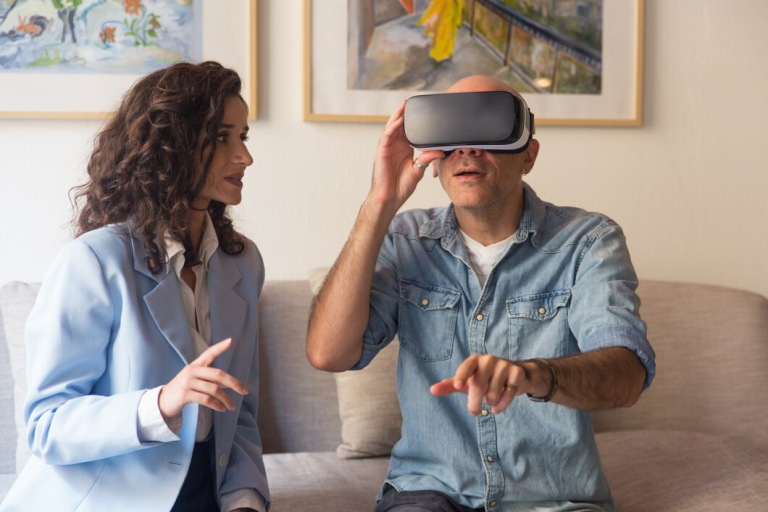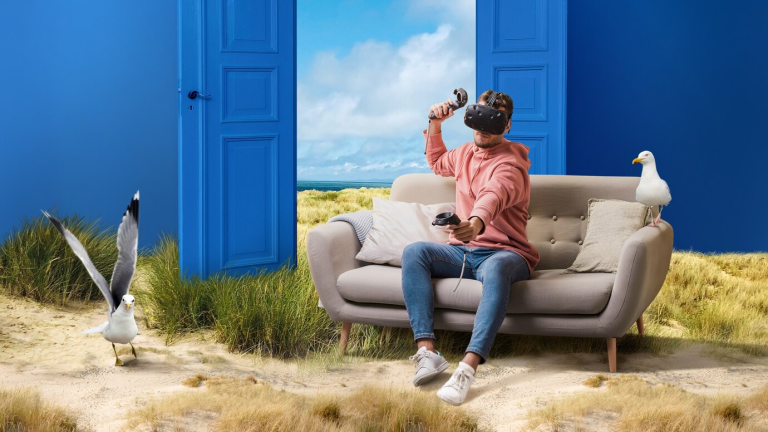Virtual Reality (VR) is transforming the way we design homes, creating immersive experiences that enhance visualization, communication, and decision-making. Imagine stepping into your dream home before construction begins—exploring every room, adjusting layouts, and selecting finishes—all from the comfort of a VR headset. This is no longer a futuristic concept; it’s the present reality of home design.
If you’re curious about how VR can revolutionize your next project, here are the top 10 benefits of using Virtual Reality in home design.
1. Enhanced Visualization
VR bridges the gap between imagination and reality by creating lifelike 3D environments. Instead of relying on blueprints or static renderings, clients can virtually walk through their future homes. This immersive experience provides a true sense of scale, space, and aesthetics.
Why It Matters:
- Clients better understand design elements like furniture placement, wall textures, and lighting.
- VR improves decision-making, reducing post-construction dissatisfaction.
Stat: Projects using VR report a 40% higher client satisfaction rate compared to traditional visualization methods.
2. Improved Client Engagement
VR takes client engagement to the next level by making the design process interactive and enjoyable. Clients can explore, experiment, and actively participate in shaping their dream homes.
Why It Matters:
- Clients feel more connected to the project, increasing trust and satisfaction.
- Interactive VR presentations make it easier to address client concerns early.
Example: Designers using VR at presentations report a 30% faster approval rate for initial concepts.
3. Efficient Design Modifications
Design changes are inevitable, but VR makes them faster and more cost-effective. Clients can instantly see how different layouts, materials, or colors will look in their spaces, enabling real-time adjustments.
Why It Matters:
- Saves time by reducing back-and-forth communication.
- Minimizes delays in finalizing designs.
Pro Tip: Use VR to offer multiple design options, allowing clients to compare layouts side-by-side.
4. Cost Savings
By identifying potential issues early, VR reduces costly revisions during construction. For example, if a client realizes they dislike a room’s layout during the VR walkthrough, adjustments can be made before construction starts.
Why It Matters:
- Reduces the likelihood of expensive mid-construction changes.
- Ensures resources are allocated efficiently.
Stat: VR reduces design revision costs by up to 25%, according to industry reports.
5. Enhanced Collaboration
VR makes collaboration between designers, architects, and clients seamless. Stakeholders can virtually explore the same space, regardless of location, and provide feedback in real-time.
Why It Matters:
- Improves communication among team members.
- Ensures everyone is aligned on the project vision.
Example: A design team in Los Angeles used VR to collaborate with international clients, reducing project delays by 15%.
6. Accurate Space Planning
Space planning becomes precise with VR, as designers can visualize the exact placement of furniture, fixtures, and appliances. This level of detail ensures the space is both functional and visually appealing.
Why It Matters:
- Prevents overcrowding or under-utilization of spaces.
- Helps clients visualize flow and movement within the home.
Stat: Accurate space planning with VR increases project efficiency by 20%.
7. Improved Communication
Technical drawings can be challenging for clients to interpret. VR simplifies complex concepts by presenting designs in an intuitive and engaging way.
Why It Matters:
- Reduces miscommunication between designers and clients.
- Aligns expectations, minimizing surprises during construction.
Pro Tip: Use VR to highlight specific design elements, such as custom cabinetry or lighting features.
8. Competitive Edge in the Market
Firms that adopt VR technology showcase innovation and a commitment to client satisfaction. This technological edge sets them apart from competitors and attracts more clients.
Why It Matters:
- Enhances brand reputation as a forward-thinking firm.
- Increases client referrals and project inquiries.
Example: Firms offering VR experiences see a 25% higher client retention rate.
9. Enhanced Marketing and Sales
VR isn’t just for designers—it’s a powerful marketing tool. Real estate agents and developers use VR to create virtual tours, allowing potential buyers to explore properties remotely.
Why It Matters:
- Virtual tours increase property interest and shorten sales cycles.
- Allows clients to experience the property without needing a physical visit.
Stat: Listings with VR tours generate 50% more engagement than those without.
10. Sustainable Design Practices
VR reduces the need for physical prototypes and mock-ups, making the design process more sustainable. By visualizing and testing ideas digitally, designers can minimize waste and promote environmentally responsible practices.
Why It Matters:
- Lowers the environmental impact of design revisions.
- Supports green building initiatives.
Example: A design firm reduced material waste by 15% by using VR for prototyping.
Why VR is the Future of Home Design
The benefits of VR in home design extend beyond convenience—it’s about delivering a superior client experience, improving project efficiency, and ensuring designs align with client expectations. As VR technology continues to evolve, its applications in home design will only grow, making it an essential tool for forward-thinking designers.
Why Choose VRchitects for Your VR Home Design Needs?
At VRchitects, we specialize in using Virtual Reality to bring your dream home to life. Our process includes:
- Immersive VR Presentations: Experience your home design before construction.
- Real-Time Adjustments: Make changes on the spot to align with your vision.
- Expert Guidance: Our team leverages the latest VR tools to enhance every stage of the design process.
Ready to transform your home design experience? Contact VRchitects today to explore the future of VR in home design!






